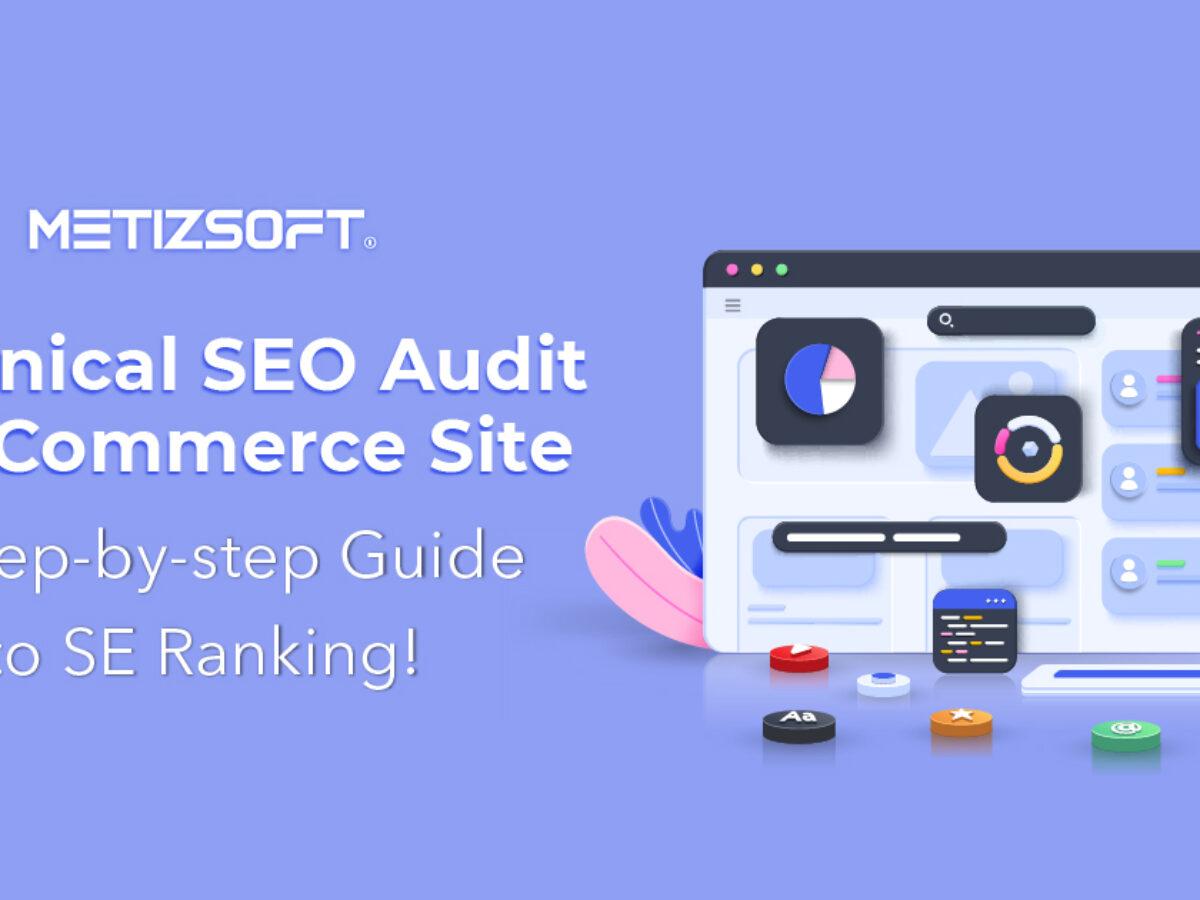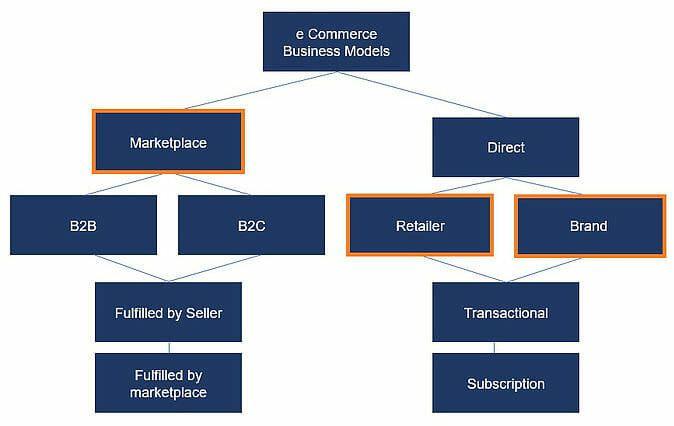Introduction
Hey there, fellow online entrepreneurs! if you’re running an eCommerce store, you know firsthand how competitive the digital marketplace can be.With countless products vying for attention, simply having a grate website isn’t enough. You need to ensure that your store stands out in search engine results, driving traffic and ultimately boosting your sales. That’s where an eCommerce SEO audit comes into play!
Imagine having the power to optimize your store so that it attracts the right customers – those who are ready to buy! In this guide, we’ll walk you through essential steps to conduct a comprehensive SEO audit tailored specifically for online stores. We’ll demystify the process, arming you with actionable insights and practical tips that can elevate your eCommerce game. So, grab a cup of coffee, and let’s dive in! Your path to greater visibility and increased revenue starts right here.
Understanding the Importance of an Ecommerce SEO Audit for Your Online Store
In the world of online retail, visibility is everything. An ecommerce SEO audit serves as a crucial checkpoint to assess how well your online store is positioned to attract and convert visitors. By conducting this audit, you can identify weaknesses in your SEO strategy that might potentially be hindering your store from reaching its full potential. Without this critical analysis, you risk losing valuable traffic and, ultimately, sales.
One of the primary benefits of an ecommerce SEO audit is the ability to uncover technical issues that could be affecting your site’s performance. Issues such as slow page load times, broken links, and improper URL structures can significantly hinder user experience and search engine rankings. Addressing these problems ensures that your customers have a smooth shopping experience, which can lead to higher conversion rates.
A comprehensive audit also allows you to evaluate your keyword strategy. Are you targeting the right keywords that match your customers’ search intent? Analyzing your current keyword performance can reveal opportunities to refine your targeting. By focusing on high-volume, low-competition keywords, you can attract more relevant traffic to your site, which is crucial for increasing sales.
moreover, an ecommerce SEO audit helps in assessing your content quality and relevance. Quality content not only engages customers but also signals to search engines that your site is a valuable resource. By reviewing your product descriptions,blog posts,and other written materials,you can ensure they are optimized and aligned with SEO best practices. This not only enhances user engagement but also improves your chances of ranking higher in search results.
Lastly, competitor analysis is a vital component of an SEO audit. Understanding what your competitors are doing well and where they are lacking can provide you with insights to refine your own strategy. You can benchmark your performance against industry leaders and identify gaps in your approach. This allows you to stay ahead of the competition and capture a larger share of the market.
| Audit Component | Benefit |
|---|---|
| Technical Issues | Enhances user experience and site performance |
| Keyword Strategy | Attracts more relevant traffic |
| Content Quality | Boosts engagement and search rankings |
| Competitor Analysis | Identifies market opportunities |
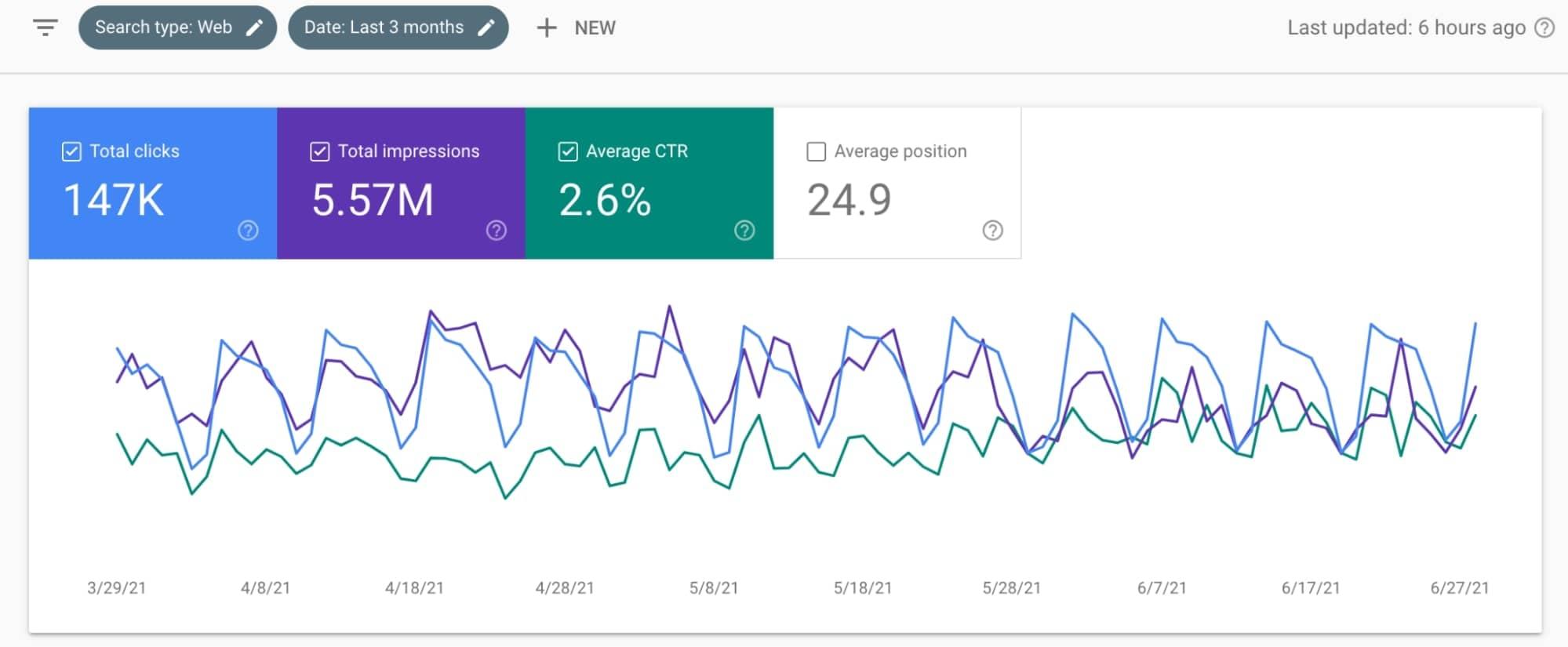
identifying Key SEO Metrics to Track for Optimal performance
To achieve optimal performance in your ecommerce SEO efforts, it’s crucial to identify and track key metrics that provide insights into how well your online store is performing. Below are some essential metrics that can help guide your optimization strategy:
- Organic Traffic: Monitor the number of visitors arriving at your site through organic search results. This metric is fundamental as it reflects the effectiveness of your SEO strategies.
- Conversion Rate: Analyze the percentage of visitors who make a purchase.A high conversion rate indicates that your website is effectively persuading visitors to buy.
- Bounce Rate: Keep an eye on the bounce rate, which measures the percentage of visitors who navigate away from your site after viewing only one page.A high bounce rate may suggest that your landing pages need betterment.
- Average Session Duration: This metric tells you how long visitors are staying on your site. Longer sessions typically indicate that users find your content engaging.
- Keyword Rankings: Track how well your target keywords are performing in search engine results pages (SERPs). Regular monitoring will help you identify opportunities for optimization.
In addition to these metrics, it’s helpful to analyze click-through rates (CTR) from search engine results. A low CTR might suggest that your meta titles and descriptions could be optimized to better attract clicks. Moreover, consider monitoring the number of indexed pages in search engines, which can indicate the effectiveness of your site’s internal linking structure and overall crawlability.
To streamline your tracking efforts, create a simple dashboard where you can visualize trends over time. Here’s a straightforward table layout you can use to track your key metrics monthly:
| Metric | Current Month | Previous Month | change (%) |
|---|---|---|---|
| Organic Traffic | 5,000 | 4,500 | +11.1% |
| Conversion Rate | 3.5% | 3.2% | +9.4% |
| Bounce Rate | 40% | 42% | -4.8% |
| Average Session Duration | 3:15 | 2:55 | +11.3% |
Tracking these metrics not only helps you understand the performance of your ecommerce store but also guides you in making informed decisions for future optimizations. By consistently monitoring these indicators, you’ll be better equipped to enhance your SEO strategy and boost your online store’s visibility and sales.
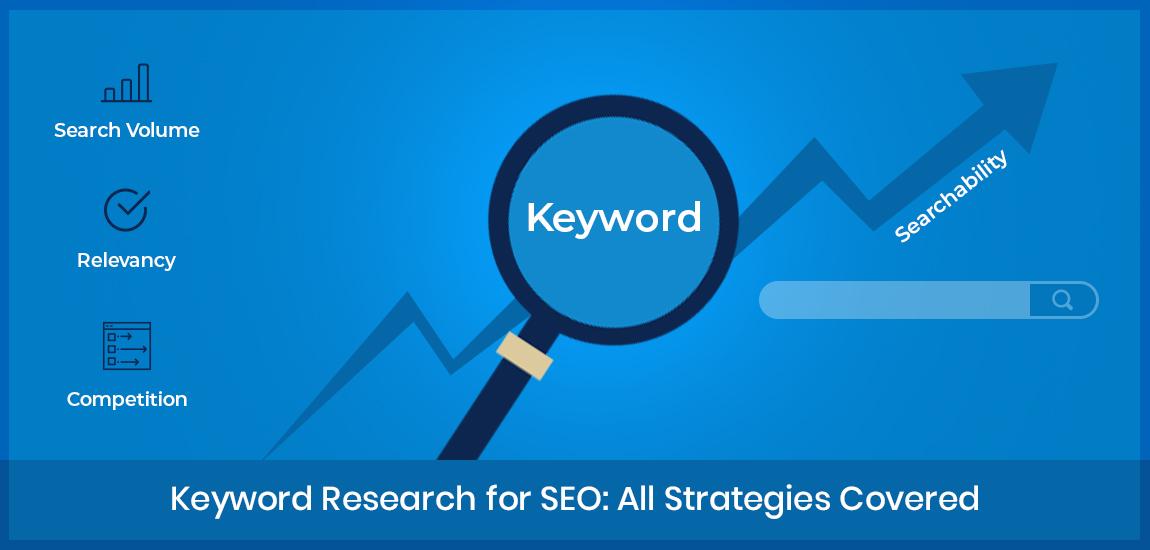
Conducting a Comprehensive Keyword Research to Attract Your Target Audience
To effectively draw in your target audience, the first step lies in understanding the keywords that resonate with them.This means diving deep into the minds of potential customers to uncover the phrases and terms they are using to search for products or services like yours. By conducting a comprehensive keyword research, you empower your ecommerce store to align with the needs and interests of your audience, resulting in higher visibility and increased conversions.
Start by utilizing tools like Google Keyword Planner, Ahrefs, or SEMrush to generate keyword ideas.These platforms can definitely help you discover:
- high-volume search terms that can drive traffic.
- Long-tail keywords that are less competitive but highly relevant.
- Related questions that potential customers are asking.
Once you’ve gathered a robust list of keywords, it’s crucial to categorize them based on search intent. This involves understanding whether the keywords are aimed at:
- Informational content (e.g., ”how to use product X”)
- Transactional queries (e.g., “buy product X online”)
- Navigational searches (e.g., “brand X official site”)
Transitioning from the brainstorming phase, compile your findings into a structured table for clarity. Here’s an example of how to organize your keywords:
| Keyword | Search Volume | Competition Level | Search Intent |
|---|---|---|---|
| Buy organic skincare | 12,000 | Medium | Transactional |
| Benefits of organic skincare | 8,500 | Low | Informational |
| Best organic skincare brands | 5,000 | Medium | Informational |
to ensure your keyword strategy remains effective, regularly revisit and adjust your keyword list based on performance metrics and trends. Analyze which keywords are driving traffic and conversions,and optimize your content accordingly. By remaining flexible and proactive, you can keep your ecommerce site aligned with your audience’s evolving needs and preferences, ultimately leading to sustained growth and success in the competitive online marketplace.
Optimizing Your Product Pages for Better Visibility and Higher Conversions
To ensure your product pages stand out in the crowded eCommerce landscape, focusing on optimization is key. Start by enhancing your product titles and descriptions with relevant keywords that potential customers are likely to search. Use a mix of long-tail and short-tail keywords to capture a broader audience. Make your titles catchy yet informative, while your descriptions should offer not just details about the product, but also the benefits it brings to the user.
High-quality images are crucial for any product page. Ensure you have multiple images from different angles, and if possible, include videos to give customers a more dynamic view. Each image should feature alt tags that describe the image contextually, which helps improve SEO and accessibility. Remember,customers can’t touch and feel a product online,so use visuals that evoke an emotional response and inspire confidence in their purchase.
Don’t overlook the power of customer reviews. Encourage your buyers to leave feedback and make sure to display these reviews prominently on your product pages. Positive reviews not only build trust but also contribute to SEO as they frequently enough contain keywords naturally embedded in user-generated content. Consider implementing a star rating system to provide a quick visual cue of customer satisfaction.
another critical element is the implementation of structured data. This code helps search engines better understand your product information, making it easier for them to display rich snippets in search results. By using structured data for things like product availability, pricing, and reviews, you can significantly improve your visibility on search engine results pages (SERPs).
optimize your product pages for mobile users. Ensure that your website is fully responsive and that loading times are minimized. A important portion of online shopping takes place on mobile devices,so a seamless mobile experience is vital. Use tools like Google PageSpeed Insights to identify and implement improvements that enhance mobile performance.

Enhancing Site Structure and Navigation to improve User Experience
To create a seamless shopping experience, it’s essential to focus on your site’s structure and navigation. A well-organized online store not only helps users find what they’re looking for but also plays a crucial role in improving your search engine rankings. Here are some key strategies to enhance these elements:
- Logical Categorization: Group your products into clear, easily navigable categories. This not only helps users browse but also allows search engines to index your site more effectively.
- Bread Crumbs: Implement breadcrumb navigation to help users understand their location within your website. This improves usability and encourages deeper exploration of your products.
- Search Functionality: Integrate an efficient search bar that provides quick results. Utilize autocomplete features and filters to further enhance the search experience.
- Mobile Optimization: ensure your navigation is mobile-friendly. A significant amount of online shopping is done via mobile devices, so responsive design is a must.
Another effective approach is to streamline your menu structure. A cluttered menu can overwhelm customers and drive them away. Aim for a simple layout that prioritizes your most critically important categories and products. Consider the following:
| Menu Type | Description |
|---|---|
| Dropdown Menus | Useful for organizing subcategories without overwhelming the main navigation. |
| sticky Navigation | Keeps the menu accessible as users scroll down the page,enhancing usability. |
| Search Prominence | Position your search bar prominently to facilitate easy access for users. |
Lastly,don’t underestimate the power of user feedback. Regularly review analytics and customer insights to identify any navigational pain points. Consider conducting usability tests to gather direct feedback from users on how they interact with your site. By prioritizing user experience, you’re not only investing in customer satisfaction but also in your site’s overall performance.
Leveraging Technical SEO to Boost Your Ecommerce Site’s performance
When it comes to enhancing your ecommerce site’s visibility and user experience, technical SEO plays a pivotal role. By addressing the fundamental elements that search engines and users interact with, you can create a solid foundation for your online store. Here are some critical areas to focus on:
- Site Speed: A fast-loading site is crucial for user retention and SEO. Tools like Google PageSpeed Insights can help identify areas for improvement.
- Mobile optimization: With the majority of consumers shopping on mobile devices, ensuring your site is responsive and mobile-friendly is non-negotiable.
- XML Sitemap: Creating and submitting an XML sitemap helps search engines understand the structure of your site, making it easier to crawl and index your pages.
- structured Data: Implementing schema markup can enhance your product pages in search results, providing users with rich snippets that drive higher click-through rates.
Another essential aspect of technical SEO is ensuring your site has a logical URL structure. Clean and descriptive URLs not only help search engines understand the content of your pages but also improve the user experience. Such as:
| URL structure | SEO Impact |
|---|---|
| /product-category/product-name | Descriptive, easy to read, boosts relevance |
| /p12345 | Confusing for users, lacks keywords |
Don’t overlook the importance of HTTPS. Securing your site with an SSL certificate not only boosts user trust but is also a ranking factor for Google. An ecommerce site requires the highest level of security, especially when handling sensitive customer information such as payment details.
Lastly, regularly auditing your site for broken links and duplicate content can prevent user frustration and keep your SEO efforts on track. Tools like Screaming Frog or SEMrush can simplify this process and help you identify technical issues that could hinder your site’s performance.
Building Quality Backlinks and Strengthening Your Brand Authority
When it comes to enhancing your online store’s presence, building quality backlinks is crucial for not only boosting your search engine rankings but also establishing your brand’s authority. Quality backlinks from reputable sources signal to search engines that your content is valuable and trustworthy,which can significantly impact your overall visibility and traffic.
To cultivate these high-quality backlinks, consider the following strategies:
- create Outstanding Content: Crafting informative, engaging, and share-worthy content is the foundation of attracting backlinks. Think of in-depth guides, infographics, or unique case studies that resonate with your target audience.
- Guest Blogging: Reach out to reputable blogs in your niche and offer to write guest posts. This not only allows you to showcase your expertise but also provides an chance to include a backlink to your store.
- Leverage Social Media: Promote your content across your social media channels. Engaging with your audience can lead to shares and, consequently, valuable backlinks from individuals and organizations in your industry.
- Engage with Influencers: Collaborating with influencers can amplify your reach. When they share your products or content,it can lead to high-quality backlinks from their followers or other brands.
It’s not just about quantity; the quality of your backlinks matters significantly. Here’s a short table to illustrate the types of backlinks that can enhance your brand’s authority:
| Type of Backlink | Example | Impact |
|---|---|---|
| Editorial Backlink | Featured in blog articles | High credibility & trust |
| Guest Post Backlink | Articles on other blogs | Boosts authority |
| social Media Backlink | Shares and mentions on platforms | Increases visibility |
| business Directory Backlink | Listings on industry websites | Improves local SEO |
Incorporating these strategies effectively can lead to a solid backlink profile that not only improves your SEO rankings but also propels your brand to new heights. Remember, consistency is key; regularly monitoring your backlink profile and the performance of your content can refine your strategies and further enhance your authority in the eCommerce landscape.

Monitoring Your Analytics and Adjusting Strategies for Continuous Improvement
Keeping a close eye on your analytics is crucial for pinpointing what’s working and what isn’t within your ecommerce strategy. By regularly examining key performance indicators (KPIs), you can gain valuable insights that inform future decisions. Here are some essential metrics to monitor:
- Traffic Sources: understand where your visitors are coming from—organic search, paid ads, social media, or referrals.
- Conversion Rates: Track how many visitors turn into customers to evaluate the effectiveness of your site and marketing efforts.
- Cart Abandonment Rate: Identify how many customers leave your site before completing a purchase, which can highlight potential issues in your checkout process.
- Average order Value (AOV): Monitor the average amount spent per order to strategize ways of upselling and cross-selling.
Once you’ve gathered this data, the next step is to adjust your strategies accordingly. For instance, if you notice a high cart abandonment rate, consider simplifying your checkout process or offering incentives like free shipping. Conversely, if you find that a particular marketing channel, such as social media, yields a high conversion rate, you might want to invest more resources there. The key is to remain flexible and responsive to the data.
Additionally, setting specific goals can help streamline your monitoring process. develop a table to track your metrics over time, making it easier to visualize trends and adjust your strategies accordingly. Here’s a simple example:
| month | Traffic | Conversion Rate | Average Order Value |
|---|---|---|---|
| January | 1,200 | 2.5% | $50 |
| February | 1,500 | 3.0% | $55 |
| March | 2,000 | 2.8% | $60 |
Lastly, don’t forget to utilize A/B testing. Experiment with different elements on your site—such as product images, descriptions, and call-to-action buttons—and analyze which versions perform better. The beauty of ecommerce is that you can continuously refine your approach based on direct feedback from your analytics. This iterative process not only drives better results but also enhances overall user experience, keeping your customers engaged and returning for more.

Implementing Local SEO Tactics to Drive Local Traffic to Your Online Store
maximizing Your Local SEO Strategy
To effectively drive local traffic to your online store, it’s essential to implement localized SEO tactics that resonate with your target audience. Start with optimizing your website’s meta tags, ensuring that you include local keywords that reflect your business location. For example, if you sell handmade crafts in Denver, incorporate phrases like “handmade crafts in Denver” within your title tags and meta descriptions. This simple adjustment can significantly improve your visibility in local search results.
Next, leverage the power of Google My Business. creating and maintaining an optimized Google My Business listing can work wonders for your local SEO efforts. Make sure to include accurate information about your business, such as your address, phone number, and operating hours. Additionally, regularly updating your listing with fresh content, such as new products or promotions, can enhance your chances of appearing in local search packs.
Engaging with the Local Community
Engagement is key when it comes to local SEO. Participate in community events, sponsor local initiatives, or collaborate with nearby businesses. By building these relationships, you not only strengthen your local presence but also create opportunities for backlinks that can boost your online authority.Don’t forget to share these collaborations on your website and social media platforms to maximize visibility.
Moreover, collect and showcase customer reviews on your site and Google My Business page. Positive reviews not only enhance your credibility but also improve your local search rankings.Responding promptly to reviews, whether positive or negative, shows that you value customer feedback and fosters trust among potential buyers.
| Local SEO Tactic | Description |
|---|---|
| Optimize Meta Tags | Incorporate local keywords in title tags and descriptions. |
| Google My Business | Maintain an updated and verified business listing. |
| Community Engagement | Participate in local events and collaborations. |
| Customer Reviews | Encourage and respond to reviews for credibility. |
ensure your website is mobile-friendly. Many local searches are conducted via mobile devices,so having a responsive design is crucial. A seamless user experience leads to higher engagement rates and conversions. By implementing these local SEO tactics, you’ll not only drive more local traffic to your online store but also create a loyal customer base that supports your business.
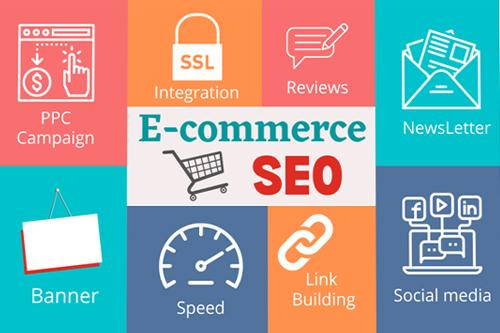
Staying Ahead of Trends: Future-Proofing your Ecommerce SEO Strategy
In the fast-paced world of ecommerce, staying ahead of trends is crucial for maintaining a competitive edge. As consumer behavior evolves and technology advances, your SEO strategy must adapt to these shifts. Here are some key areas to focus on to future-proof your ecommerce SEO approach:
- Voice Search Optimization: With the rise of smart speakers and voice-activated searches, optimizing for voice search is essential. Focus on natural language and question-based keywords to capture this growing audience.
- Mobile-First Indexing: Google prioritizes mobile versions of sites for indexing. Ensure your mobile site is responsive, loads quickly, and provides an excellent user experience to stay relevant.
- Artificial Intelligence Insights: Leverage AI tools to analyze consumer behavior and search trends. These insights can help you make data-driven decisions for your SEO strategy.
- Video content: Video is becoming a dominant form of content online. Incorporate product videos and tutorials to enhance user engagement and improve your search rankings.
- Local SEO Enhancement: As consumers increasingly look for local options, optimizing for local SEO can drive foot traffic to physical stores. Claim your Google My Business listing and encourage customer reviews.
To illustrate the importance of these strategies, consider the following table that highlights the impact of emerging trends on SEO performance:
| Trend | Impact on SEO |
|---|---|
| Voice Search | Increased visibility for long-tail keywords and conversational phrases. |
| Mobile Optimization | Higher rankings and better user experience, leading to increased conversions. |
| AI Tools | Enhanced analytics and personalized marketing efforts, improving customer targeting. |
| Video Marketing | Higher engagement rates and time spent on site, boosting rankings. |
| Local SEO | greater visibility for local searches, driving more traffic to brick-and-mortar locations. |
By proactively adapting to these shifts, you can not only enhance your current SEO performance but also ensure your ecommerce business is well-positioned for the future. Each of these strategies requires ongoing assessment and adjustments,but the payoff in visibility and sales can be significant. Embrace these changes and watch your online store thrive in an ever-evolving digital landscape.
Frequently Asked Questions (FAQ)
Q&A: Ecommerce SEO Audit guide: Essential Steps for Online Store Optimization
Q: What exactly is an ecommerce SEO audit and why is it important?
A: Great question! An ecommerce SEO audit is a comprehensive evaluation of your online store’s search engine optimization strategies. It’s crucial because it helps identify areas where your site can improve to enhance visibility in search engines, drive more organic traffic, and ultimately increase sales. Ignoring this can mean missing out on valuable customers who are actively searching for your products!
Q: What are the first steps I should take when conducting an SEO audit for my online store?
A: Start with a thorough assessment of your site’s current performance. Use tools like Google Analytics and Google Search Console to analyze traffic sources, user behavior, and keyword performance.From there, evaluate your website’s structure, ensuring it’s user-friendly and easy to navigate. A well-structured site not only helps visitors but also makes it easier for search engines to crawl your pages.
Q: How does keyword research fit into this audit process?
A: Keyword research is a cornerstone of any effective SEO audit. You need to know which terms potential customers are using to find products like yours. Utilize tools like semrush or Ahrefs to uncover keywords with high search volumes and lower competition. This insight allows you to optimize your product descriptions, category pages, and blog content, ensuring you’re targeting the right audience.
Q: What about on-page SEO elements? What should I focus on?
A: On-page SEO is critical for ecommerce sites! Pay attention to title tags, meta descriptions, and header tags to ensure they contain relevant keywords. Optimize your product images with alt text and ensure your URLs are clean and descriptive. Don’t forget about internal linking; it not only helps with SEO but also enhances the user experience by directing visitors to related products or categories.
Q: How can I assess the quality of my content?
A: content is king in the world of SEO! Review your product descriptions, blog posts, and other site content to ensure they’re informative, engaging, and optimized for your target keywords. Look for opportunities to add value—perhaps through buying guides or how-to articles. Unique, high-quality content keeps customers on your site longer and can improve your search rankings.
Q: Is technical SEO really that critically important for ecommerce sites?
A: Absolutely! Technical SEO ensures that your site is functioning properly behind the scenes. Check for issues like slow loading times, mobile responsiveness, and broken links. Sites that load quickly and are mobile-friendly not only rank better but also provide a better shopping experience. If your site isn’t running smoothly, customers may leave before completing a purchase.
Q: How do I evaluate my site’s backlinks, and why do they matter?
A: Backlinks are votes of confidence from other websites, and they play a significant role in your site’s authority. Use tools like Moz or Ahrefs to analyze your backlink profile. look for quality over quantity—focus on getting links from reputable sources within your industry. A strong backlink profile can greatly enhance your site’s credibility and improve its ranking on search engine results pages.
Q: Any final tips for conducting an effective ecommerce SEO audit?
A: Absolutely! Regular audits are key—think of it as routine maintenance for your online store.SEO trends and algorithms change, so staying updated is crucial. Don’t hesitate to make adjustments based on your findings, and consider seeking assistance from SEO professionals if things feel overwhelming. Ultimately, a well-optimized ecommerce site not only attracts more traffic but also converts that traffic into loyal customers. Happy auditing!
In Conclusion
As we wrap up our deep dive into the Ecommerce SEO Audit Guide, let’s take a moment to reflect on the powerful impact that a well-optimized online store can have on your business.Remember, the digital marketplace is competitive, and standing out requires more than just great products – it demands visibility.
By following the essential steps we’ve outlined, you’ll not only enhance your site’s performance but also create a better experience for your customers. Think of your SEO audit as a fitness check for your online store; just like you wouldn’t skip a health check-up, don’t overlook the importance of regular audits to keep your site in peak condition.
so, why wait? Dive in, implement these strategies, and watch as your site climbs the search rankings. Your efforts today can lead to increased traffic, higher conversion rates, and ultimately, greater sales. if you have any questions or need further guidance on your SEO journey, don’t hesitate to reach out. Here’s to your online success – let’s get optimizing!

